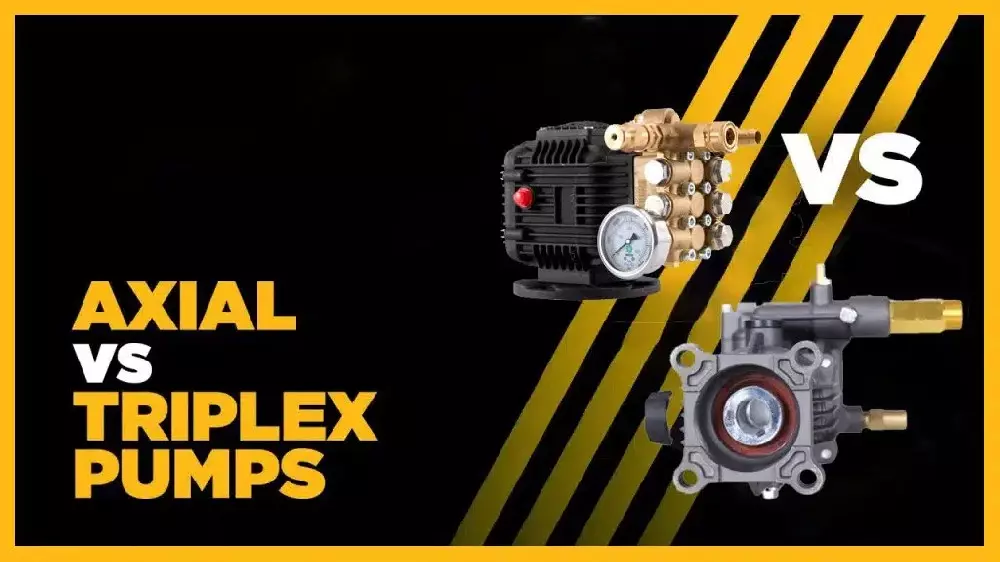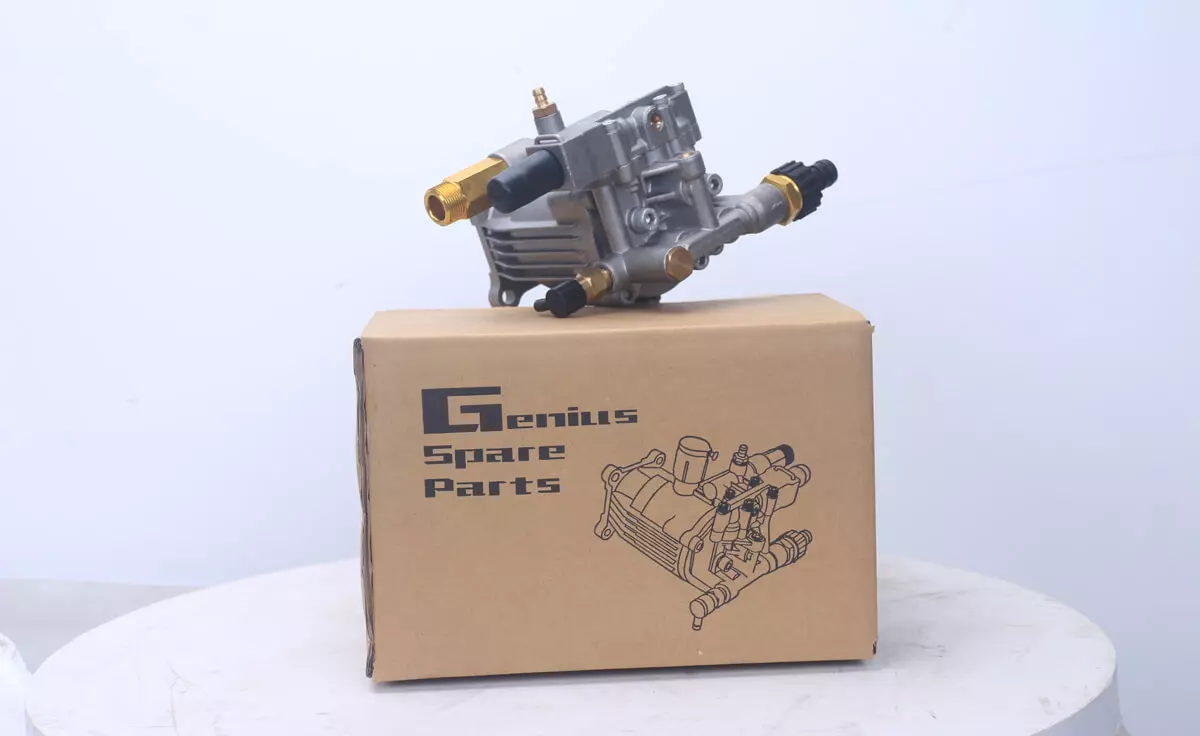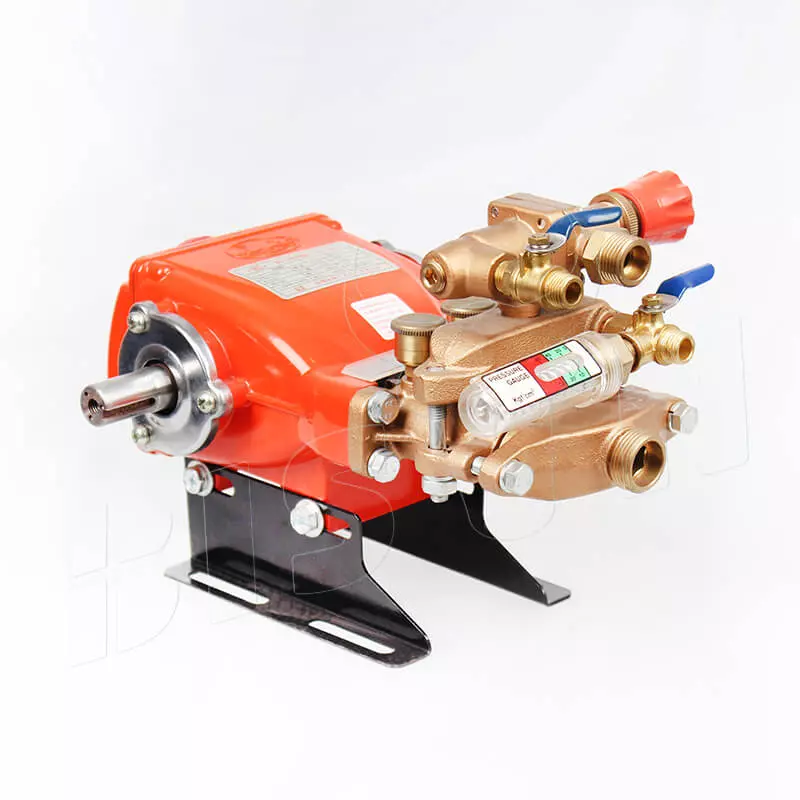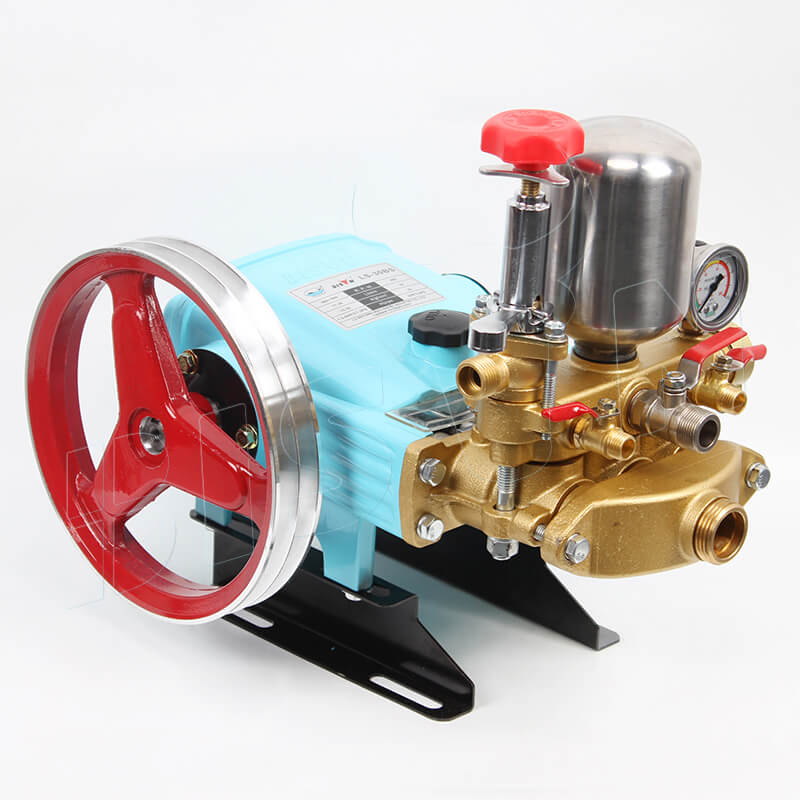axial vs triplex pumps whats the difference
2023-03-06
Table of content
The essential part of any pressure washer is the pump. This is the critical part of the machine that takes plain water and pumps it to the high pressure necessary to do the actual work. When choosing a pressure washer for high-intensity jobs like cleaning industrial equipment, it’s essential to choose a pump that’s up to the task.
Axial and triplex pumps are two types of pumps frequently used in industrial high-pressure washers. Both are excellent designs, but each has its advantages and disadvantages.
In this post about axial vs triplex pumps, we’ll see the significant differences between these two types of pumps.
Let’s get started.

Axial pumps

Axial flow pumps are available in a variety of direct drive pumps. Direct drive pumps work exactly as you would expect from the name. The pressure washer motor is directly connected to these pumps, usually via a simple shaft mounted on the motor drive shaft. This is a simple, reliable and efficient way to transfer power from the engine to the pump. This also means that the pump always runs at the same speed as the engine, as there is no hardware in between to prevent the motor’s power from increasing or decreasing. As the drive shaft rotates, it turns a cylinder block containing pistons that suck water in on the upstroke and expel it on the downstroke.
The main advantage of axial flow pumps is that they are simple, highly compact devices. In general, axial pump washers are smaller and lighter than alternatives. Depending on the design of the axial flow pump, the flow may or may not be adjustable, but the speed is always fixed. Since the pump rotates with the engine drive shaft, it is never possible to increase or decrease the speed of the pump. This can cause the cylinder seals to wear faster.
How axial pump works
Axial pumps consist of an impeller with a small number of vanes, usually only three or four. The vanes are oriented so that the pumped fluid flows out axially (in the same direction as the shaft) rather than radially (at 90 degrees to the shaft). An electric motor usually drives the impeller. The axial direction of the impeller blades creates a very low head when liquid is pumped.
Axial flow pumps can only produce 10 to 20 feet of head, much lower than most other types of centrifugal pumps. They have the capacity to generate extremely high flow rates, up to several hundred thousand gallons per minute, the highest of any type of centrifugal pump.
They are called propeller pumps because axial flow impellers look similar to marine propellers. Some configurations can adjust their flow and head by changing the pitch of the impeller blades.
Axial flow pumps have entirely different performance characteristics than other pump types. Although they produce very low heads at their standard operating point, the head-to-capacity curve is much steeper than other centrifugal pump types. The closed (zero flow) head maybe three times the head at the pump’s optimum efficiency point. In addition, the required horsepower increases as the flow decrease, with the highest horsepower consumption at shutdown (zero flow). This is contrary to the trend of radial flow pumps, which require increased horsepower at higher flow rates.
Applications of axial flow pumps
Applications that call for extremely high flow rates and low pressures use axial flow pumps. They can be used as circulating water pumps in power plants. They are also commonly used in the chemical industry to circulate large quantities of liquids in evaporators. They are useful in flood dewatering applications where large amounts of water need to be moved over short distances, such as on levees. These applications are not as common as those of radial flow pumps, so there are hardly as many axial flow pumps as there are radial flow pumps.
Pros of axial pumps
These dynamic pumps best suit high flows and low heads.
The effect of fluid rotation is less severe for axial flow pumps.
Axial flow pumps are easy to set up for low flow and high head for very efficient operation.
These pumps are the smallest among many conventional pumps.
Its small size makes it easy to use and handle.
Cons of axial pumps
These pumps are expensive.
These pumps cannot handle viscous liquids.
These are not the best choice for applications requiring high head or pressure.
Triplex pumps


Another type of pump commonly found in high-end commercial-grade pressure washers is the triplex pump. Unlike an axial pump, the piston in a triplex pump is not directly connected to the engine’s output shaft. Instead, triplex pumps utilize a crankshaft with connecting rods to drive the pistons. The piston draws water into the cylinder as it moves up and pushes it out on the down stroke.
The upfront cost of triplex pumps is usually higher, but their cost can be offset by the fact that they usually offer a very long service life. Their higher complexity means they are not as maintenance free as simpler pump types, but they will provide years of service with proper maintenance. Triplex pumps are also more efficient than axial pumps, which can translate into lower overall operating costs over the pump’s life.
How triplex pumps work
A single piston or plunger pump is very efficient at moving fluids. But the reciprocating motion of the piston or plunger can create significant pulsations in the discharge pressure and subject the pump drive mechanism to severe cyclic loads, causing premature bearings and other mechanical component failures. However, when multiple pistons or plungers are used, flow is smoother, the amount of pressure pulsation is reduced, the fatigue load on the pump mechanical components is reduced, and the pressure and flow achievable by the pump are also enhanced.
A standard AC motor is used to power triplex pumps. It has a crankshaft and connecting rod assembly to convert the rotation of the motor shaft into reciprocating motion of the piston or plunger in much the same way that an internal combustion engine works. Note that some piston and plunger pumps have more than three cylinders. For each cylinder, the pump typically has a set of check valves, one at the input and one at the output, which is common with all reciprocating positive displacement pumps.
Applications of triplex pump
Small triplex pumps with plungers are often used as high-pressure wash pumps, sometimes called power washers. These can be used on car washes, commercial and industrial wash stations and farms. Very small versions are also used as electric washing machines for household use.
Larger versions, including piston and plunger styles, are primarily used in oil drilling and well servicing applications. All types can handle heavy, viscous and corrosive fluids very efficiently, including abrasives, slurries, and liquids containing large amounts of solids.
Pros of triplex pump
They have lower operating costs.
The end of the pump is more accessible.
The pump output has less turbulence, meaning that the pump output does not generate as many waves as a tandem pump.
Pump large volumes of fluid at high pressure.
Can handle viscous fluids
Cons of triplex pump
Higher upfront cost.
Not maintenance friendly.
Usually bigger in size, so are a little bit difficult to handle.
Final thoughts on axial vs triplex pumps
An axial pump is a direct drive pump, which means that the pump rotates at the same speed as the engine. Axial flow pumps provide good pressure and generate a lot of hydraulic power, but they tend to wear out faster than triplex pumps. A washing machine with an axial pump is suitable for most DIY washing tasks.
Many commercial quality pressure washers are equipped with a triplex pump, which describes a heavy-duty displacement pump that works by contracting and expanding rather than rotating. Triplex pumps are generally more durable than axial pumps when used for the same duration, but expect to pay extra for a washer with this type of pump.
Despite triplex pumps’ advantages, both pumps can deliver the flow required for high-end industrial cleaning operations. Choosing the right pump for your company is primarily about choosing a pump that fits your budget and offers the exact specifications you need.
If you need more information on axial and triplex pumps, feel free to contact BISON’s team of professionals.
